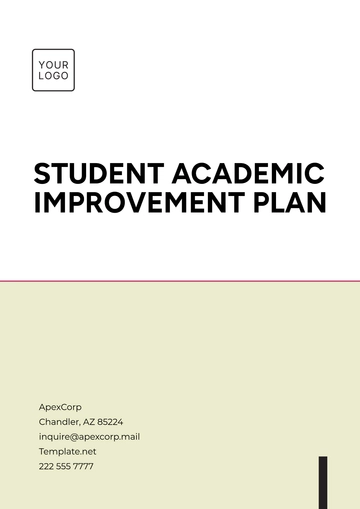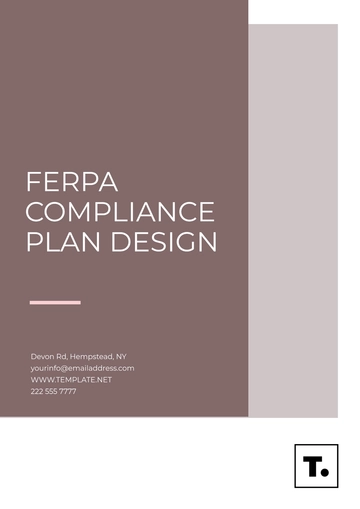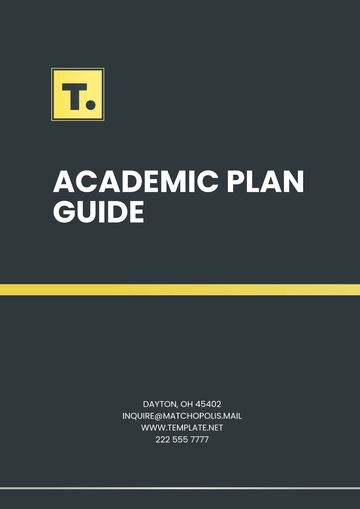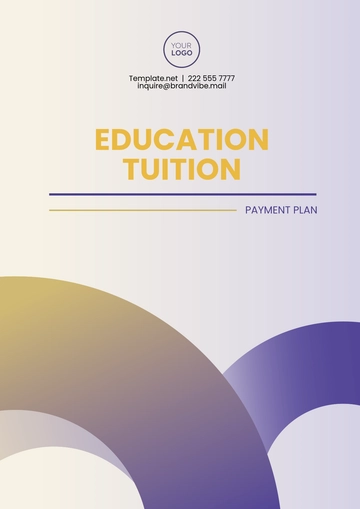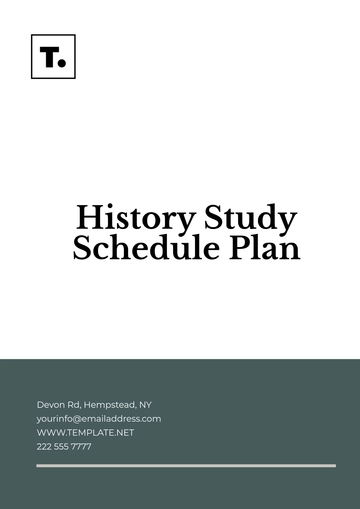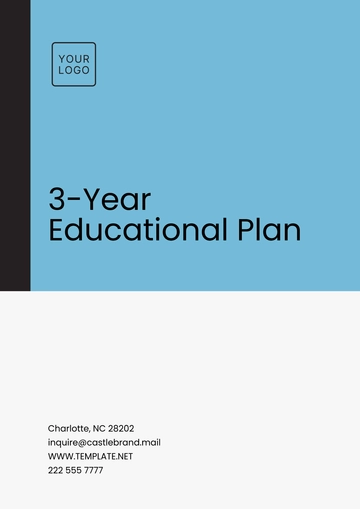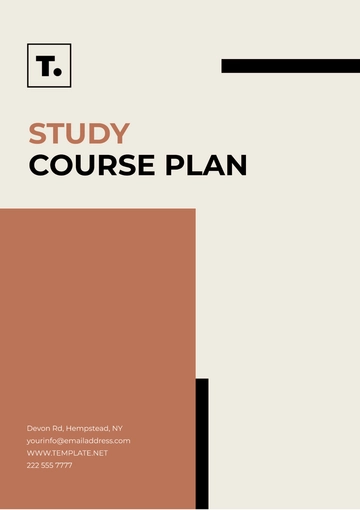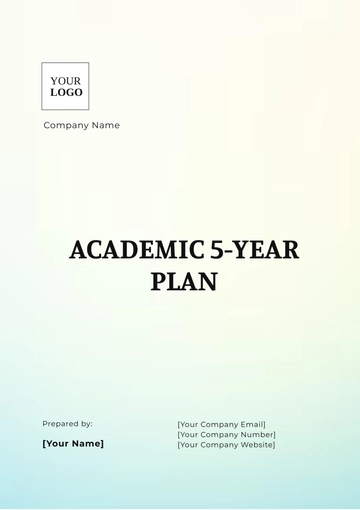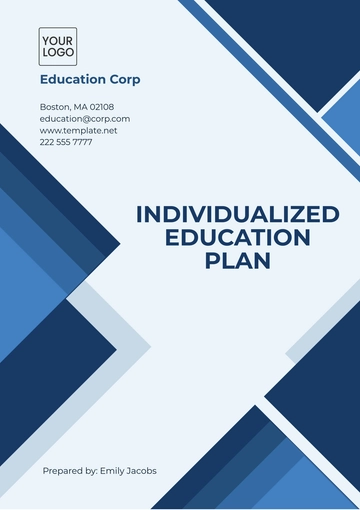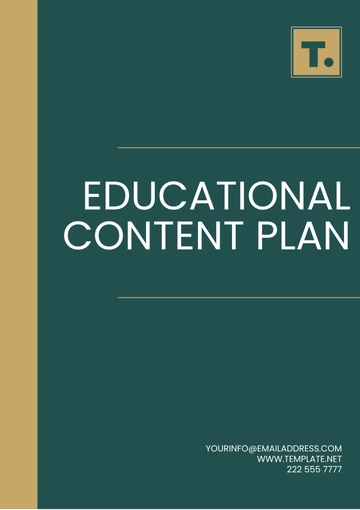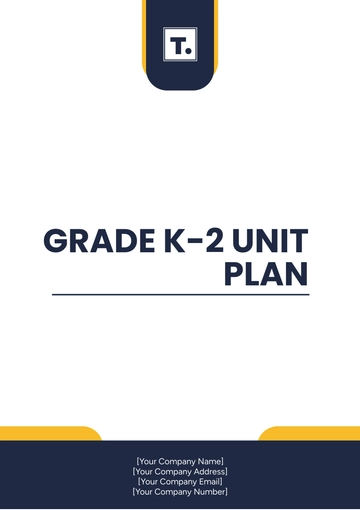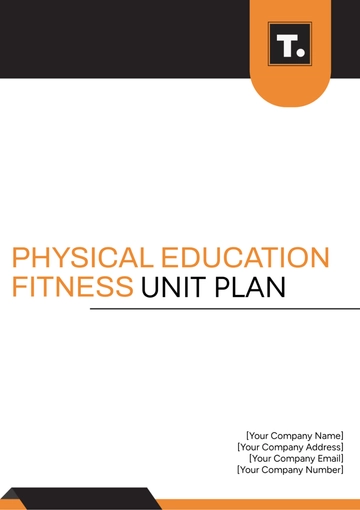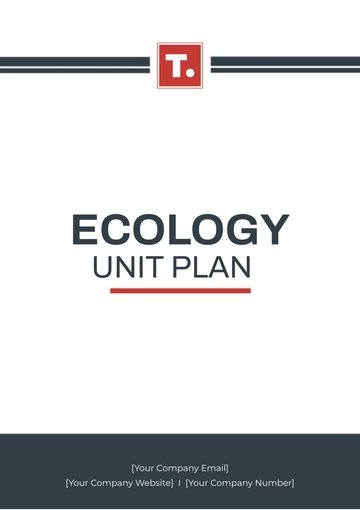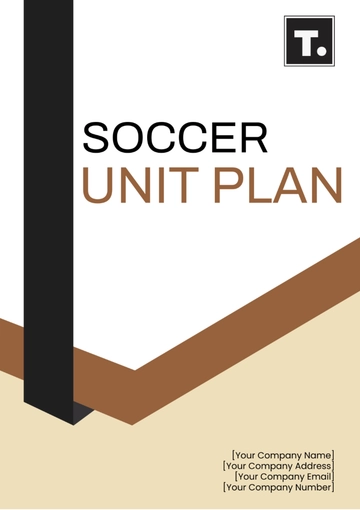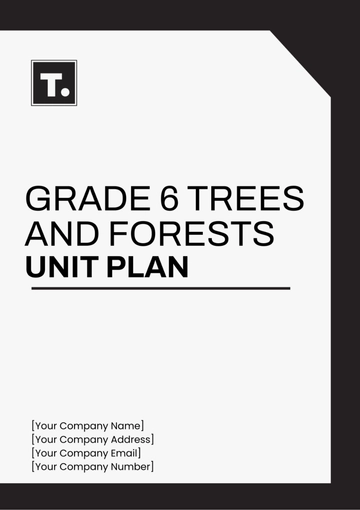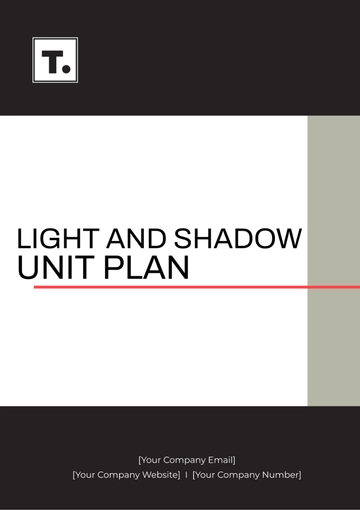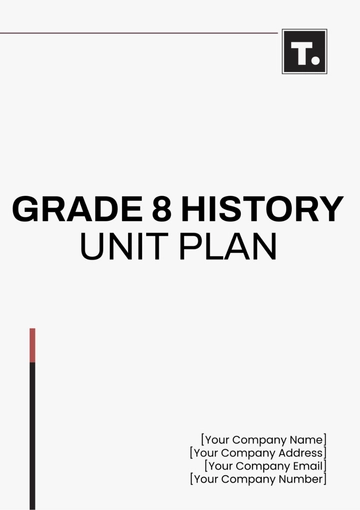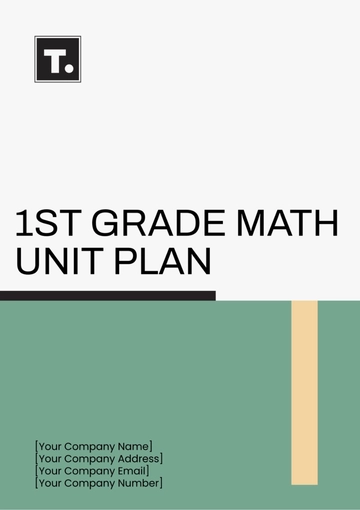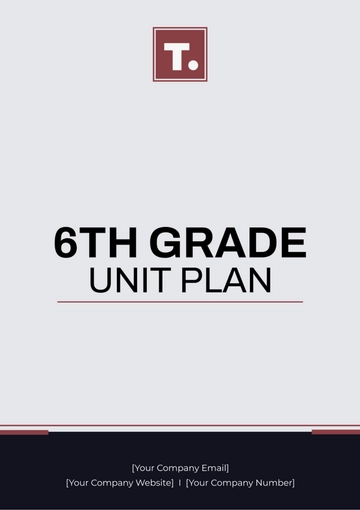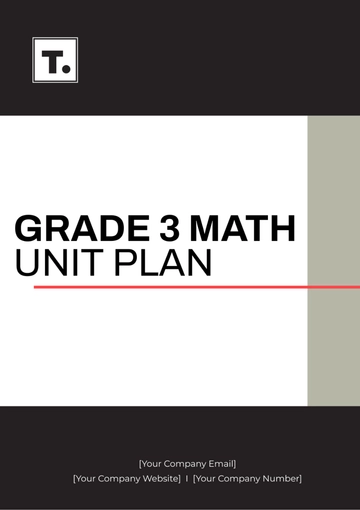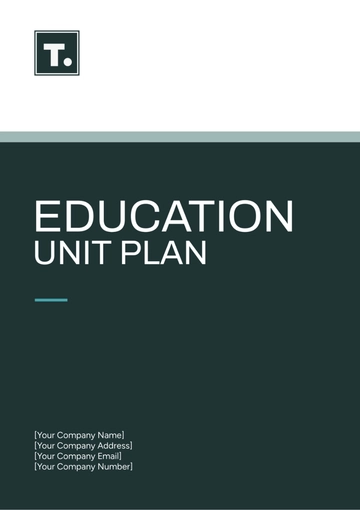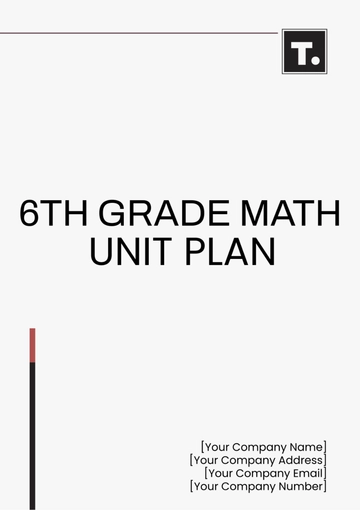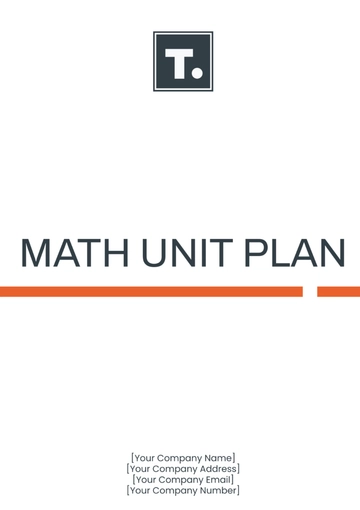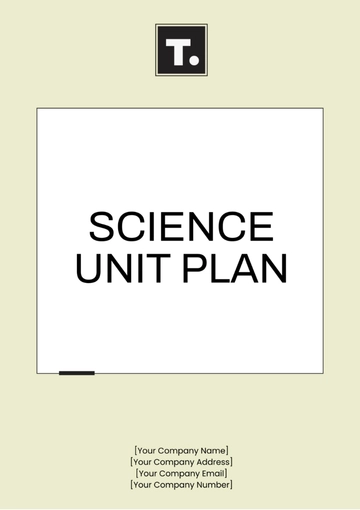Free Physical Education Fitness Unit Plan
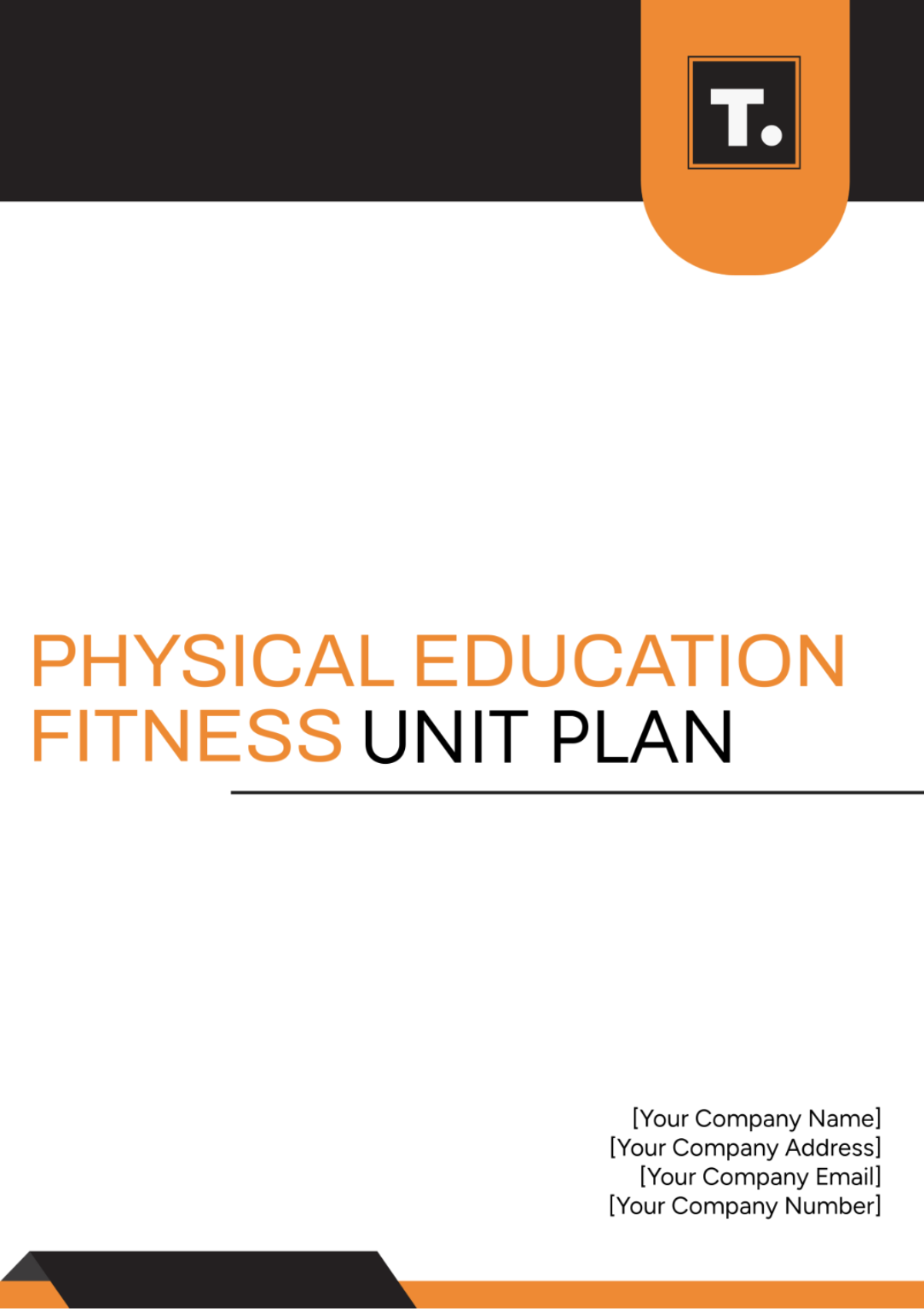
Prepared by: [Your Name]
Subject: Physical Education
Topic: Physical Fitness
Date: [Date]
I. Unit Overview
The objective of this unit is to enhance students' understanding and appreciation of physical fitness, encompassing both theoretical knowledge and practical skills. By the end of the unit, students will have improved their physical fitness levels, developed personal fitness goals, and understood the fundamental principles of fitness and healthy living.
II. Learning Objectives
Understand the five components of physical fitness and their benefits.
Demonstrate proper techniques for various fitness activities.
Develop and implement a personal fitness plan.
Monitor and assess personal fitness progress.
Identify the importance of lifelong fitness and healthy living.
III. Standards Alignment
National Physical Education Standards
State Physical Education Standards
[Specific Local Education Standards]
IV. Instructional Strategies
Various instructional strategies will be employed to cater to diverse learning styles and ensure comprehensive understanding and engagement among students.
Direct Instruction: Lectures and demonstrations on key concepts of physical fitness.
Collaborative Learning: Group activities and projects to foster teamwork and peer learning.
Hands-On Activities: Practical fitness exercises to apply theoretical knowledge.
Technology Integration: Use of fitness apps and online resources for monitoring progress.
Reflection and Self-Assessment: Journaling and fitness logs to track personal growth.
V. Assessment Methods
Pre-Assessment:
Baseline Fitness Tests: Initial tests such as the mile run, push-up test, sit-and-reach test to determine current fitness levels.
Formative Assessment:
Observation: Continuous observation and informal feedback during practical sessions.
Feedback: Regular constructive feedback on technique, effort, and progress.
Summative Assessment:
Final Fitness Tests: Comprehensive testing at the end of the unit to measure overall improvement and goal achievement.
Fitness Plan Evaluation: Assessment of the personal fitness plans developed by students based on set criteria.
Self-Assessment:
Reflection Journals: Entries reflecting on personal fitness journey, learning, and challenges faced.
Fitness Logs: Detailed records of activities, nutrition, and progress to evaluate personal growth.
Peer Assessment:
Group Project Evaluations: Peer reviews of group activities and collaborative projects.
Feedback Sessions: Structured sessions for providing and receiving constructive peer feedback.
VI. Resources and Materials
The following resources and materials will be utilized throughout this unit:
Fitness Equipment: Dumbbells, resistance bands, yoga mats, jump ropes, and medicine balls.
Technology Resources: Tablets or smartphones with fitness apps, laptops for accessing online resources and instructional videos.
Printed Materials: Fitness guidebooks, worksheets on fitness principles, nutrition charts, and exercise posters.
Outdoor Spaces: School track, field, playgrounds for various physical activities and exercises.
Personal Fitness Journals: Notebooks for journaling and logging fitness activities and progress.
VII. Unit Schedule
The unit will span a period of six weeks, with each week focusing on different aspects of physical fitness. Below is the detailed schedule:
Week | Focus | Activities | Assessment |
|---|---|---|---|
1 | Introduction to Physical Fitness |
| Pre-Assessment |
2 | Cardiovascular Fitness |
| Formative Assessment |
3 | Muscular Strength and Endurance |
| Self-Assessment |
4 | Flexibility |
| Formative Assessment |
5 | Body Composition |
| Peer Assessment |
6 | Review and Final Assessment |
| Summative Assessment |
VIII. Differentiation and Adaptations
This unit plan accommodates diverse learners through the following differentiation strategies:
Adjusting Activities:
Modifications for varying fitness levels to ensure all students can participate.
Providing alternative exercises for students with physical limitations, ensuring inclusion.
Advanced Learners:
Offering advanced techniques, higher intensity workouts, and additional challenges.
Providing resources for deeper exploration of fitness topics, such as advanced nutrition or specialized training programs.
Learning Styles:
Incorporating visual aids (videos, diagrams, charts), auditory materials (lectures, podcasts), and kinesthetic activities (hands-on practice).
Using multiple teaching methods to cater to different learning preferences and enhance understanding.
One-on-One Support:
Personalized guidance during practical exercises for students needing extra help.
Additional coaching sessions for students to work on specific skills or challenges.
Technology Integration:
Using fitness apps to tailor instruction and provide personalized feedback.
Providing digital resources such as online tutorials, webinars, and fitness tracking tools for self-paced learning.
IX. Reflection and Improvement
Upon completion of the unit, feedback will be gathered from students through surveys and reflection journals. This feedback will be used to assess the effectiveness of the instructional strategies and activities. Adjustments will be made to enhance the delivery and content of future physical fitness units, ensuring continuous improvement and better outcomes for students. Additionally, post-unit meetings with other physical education instructors will be conducted to share insights and collaborate on further improvements.
- 100% Customizable, free editor
- Access 1 Million+ Templates, photo’s & graphics
- Download or share as a template
- Click and replace photos, graphics, text, backgrounds
- Resize, crop, AI write & more
- Access advanced editor
Boost your PE classes with Template.net’s Physical Education Fitness Unit Plan Template. This fully customizable and editable resource ensures your fitness lessons are dynamic and effective. Editable in our Ai Editor Tool, it provides the flexibility to design unit plans tailored to your students' fitness goals.
You may also like
- Finance Plan
- Construction Plan
- Sales Plan
- Development Plan
- Career Plan
- Budget Plan
- HR Plan
- Education Plan
- Transition Plan
- Work Plan
- Training Plan
- Communication Plan
- Operation Plan
- Health And Safety Plan
- Strategy Plan
- Professional Development Plan
- Advertising Plan
- Risk Management Plan
- Restaurant Plan
- School Plan
- Nursing Home Patient Care Plan
- Nursing Care Plan
- Plan Event
- Startup Plan
- Social Media Plan
- Staffing Plan
- Annual Plan
- Content Plan
- Payment Plan
- Implementation Plan
- Hotel Plan
- Workout Plan
- Accounting Plan
- Campaign Plan
- Essay Plan
- 30 60 90 Day Plan
- Research Plan
- Recruitment Plan
- 90 Day Plan
- Quarterly Plan
- Emergency Plan
- 5 Year Plan
- Gym Plan
- Personal Plan
- IT and Software Plan
- Treatment Plan
- Real Estate Plan
- Law Firm Plan
- Healthcare Plan
- Improvement Plan
- Media Plan
- 5 Year Business Plan
- Learning Plan
- Marketing Campaign Plan
- Travel Agency Plan
- Cleaning Services Plan
- Interior Design Plan
- Performance Plan
- PR Plan
- Birth Plan
- Life Plan
- SEO Plan
- Disaster Recovery Plan
- Continuity Plan
- Launch Plan
- Legal Plan
- Behavior Plan
- Performance Improvement Plan
- Salon Plan
- Security Plan
- Security Management Plan
- Employee Development Plan
- Quality Plan
- Service Improvement Plan
- Growth Plan
- Incident Response Plan
- Basketball Plan
- Emergency Action Plan
- Product Launch Plan
- Spa Plan
- Employee Training Plan
- Data Analysis Plan
- Employee Action Plan
- Territory Plan
- Audit Plan
- Classroom Plan
- Activity Plan
- Parenting Plan
- Care Plan
- Project Execution Plan
- Exercise Plan
- Internship Plan
- Software Development Plan
- Continuous Improvement Plan
- Leave Plan
- 90 Day Sales Plan
- Advertising Agency Plan
- Employee Transition Plan
- Smart Action Plan
- Workplace Safety Plan
- Behavior Change Plan
- Contingency Plan
- Continuity of Operations Plan
- Health Plan
- Quality Control Plan
- Self Plan
- Sports Development Plan
- Change Management Plan
- Ecommerce Plan
- Personal Financial Plan
- Process Improvement Plan
- 30-60-90 Day Sales Plan
- Crisis Management Plan
- Engagement Plan
- Execution Plan
- Pandemic Plan
- Quality Assurance Plan
- Service Continuity Plan
- Agile Project Plan
- Fundraising Plan
- Job Transition Plan
- Asset Maintenance Plan
- Maintenance Plan
- Software Test Plan
- Staff Training and Development Plan
- 3 Year Plan
- Brand Activation Plan
- Release Plan
- Resource Plan
- Risk Mitigation Plan
- Teacher Plan
- 30 60 90 Day Plan for New Manager
- Food Safety Plan
- Food Truck Plan
- Hiring Plan
- Quality Management Plan
- Wellness Plan
- Behavior Intervention Plan
- Bonus Plan
- Investment Plan
- Maternity Leave Plan
- Pandemic Response Plan
- Succession Planning
- Coaching Plan
- Configuration Management Plan
- Remote Work Plan
- Self Care Plan
- Teaching Plan
- 100-Day Plan
- HACCP Plan
- Student Plan
- Sustainability Plan
- 30 60 90 Day Plan for Interview
- Access Plan
- Site Specific Safety Plan
